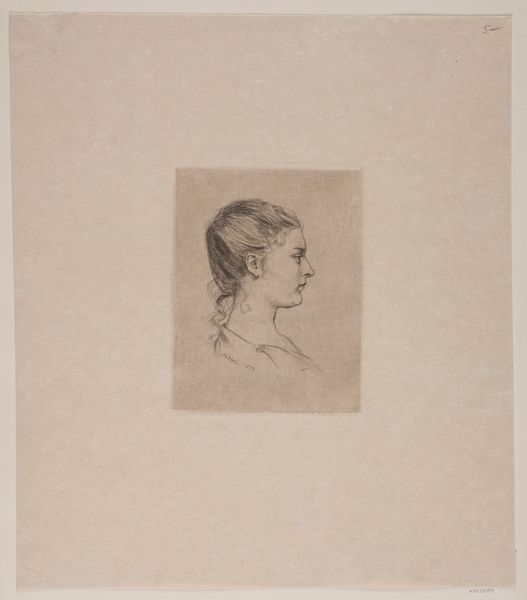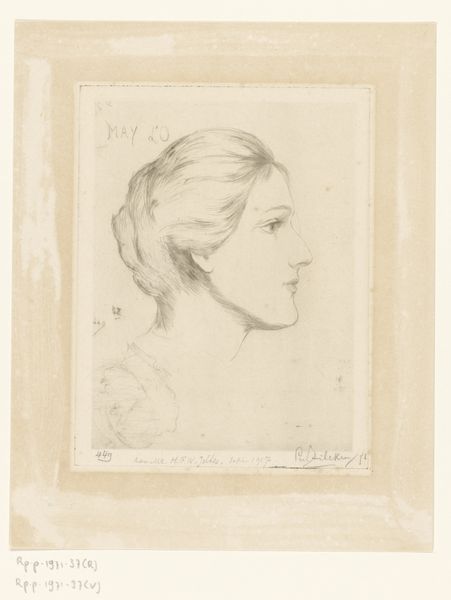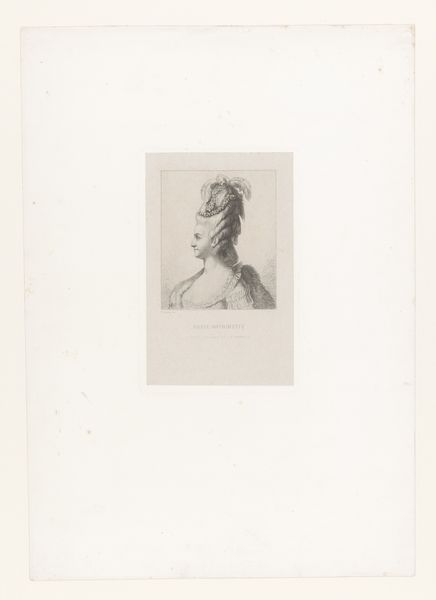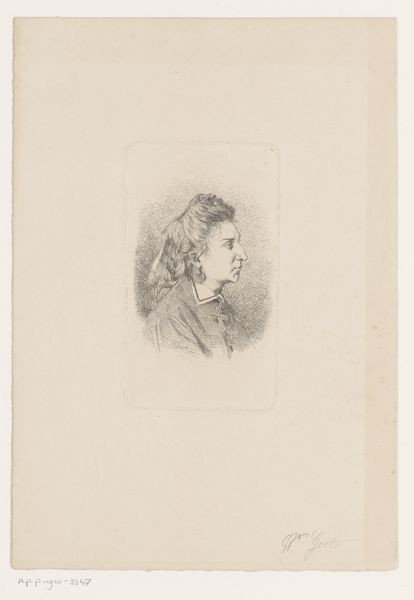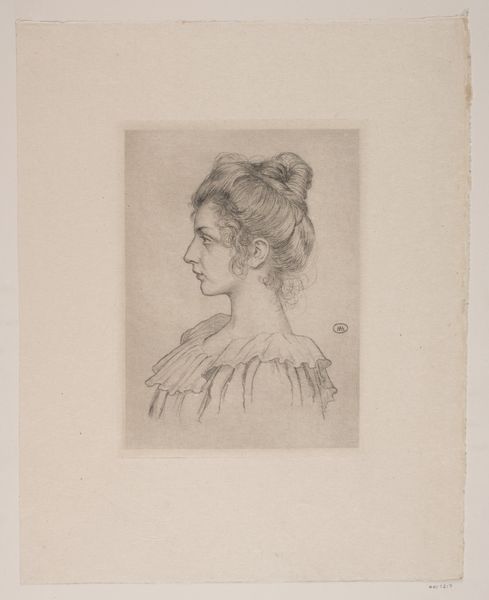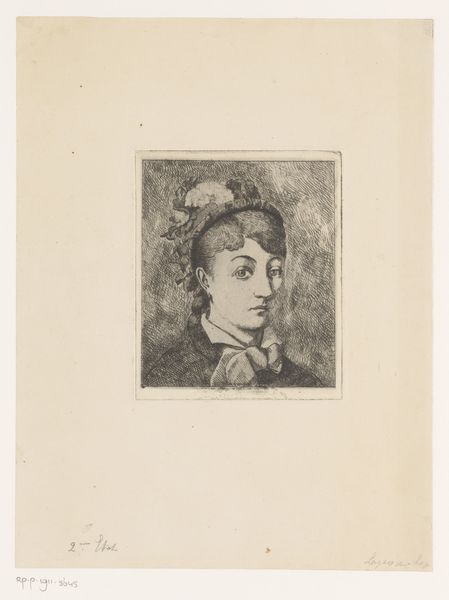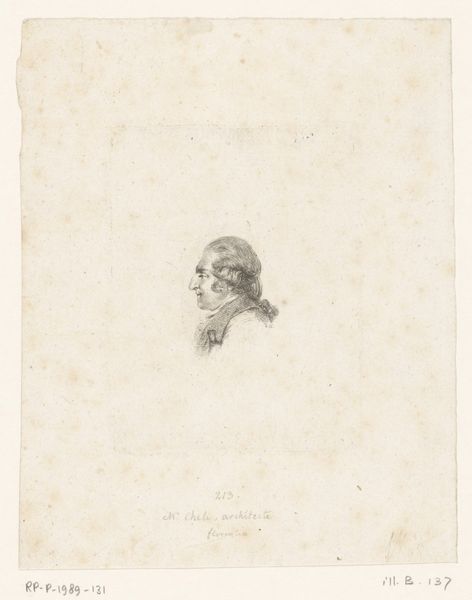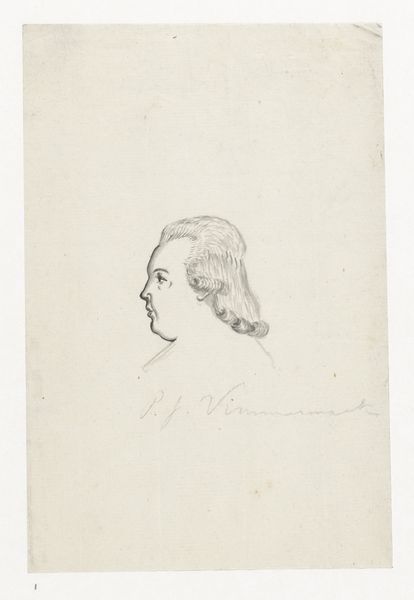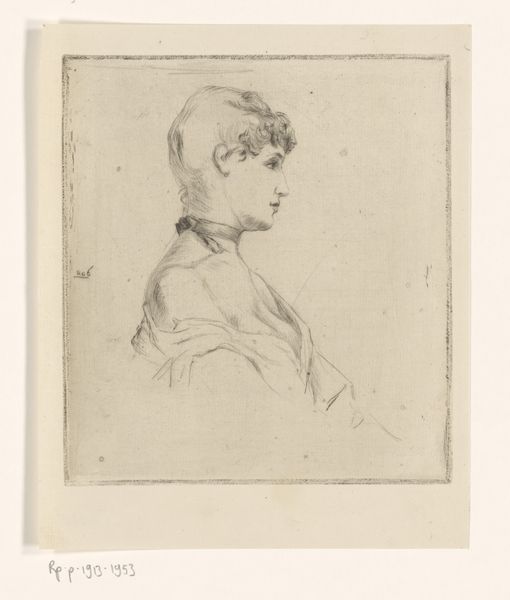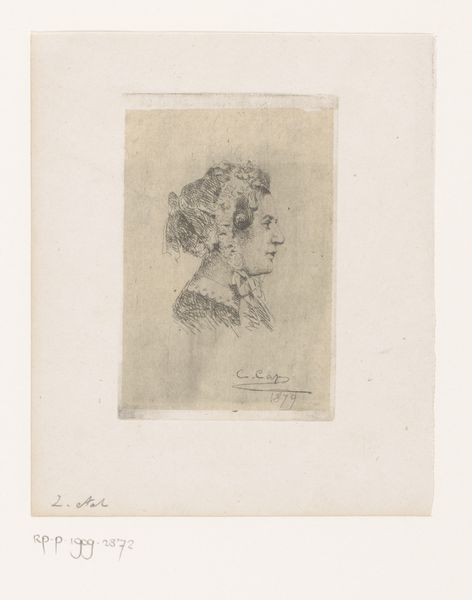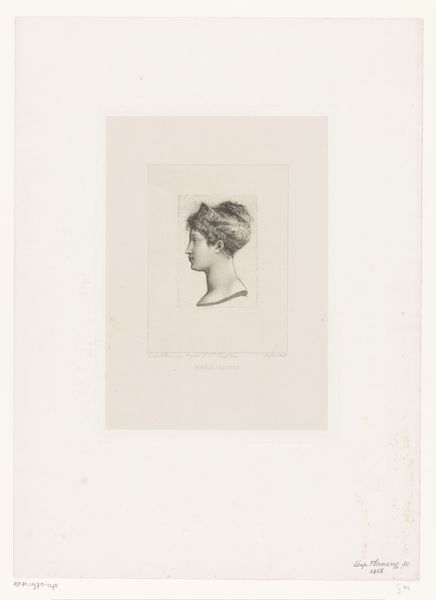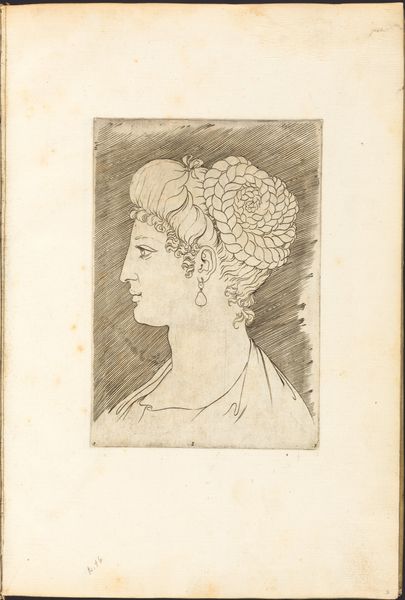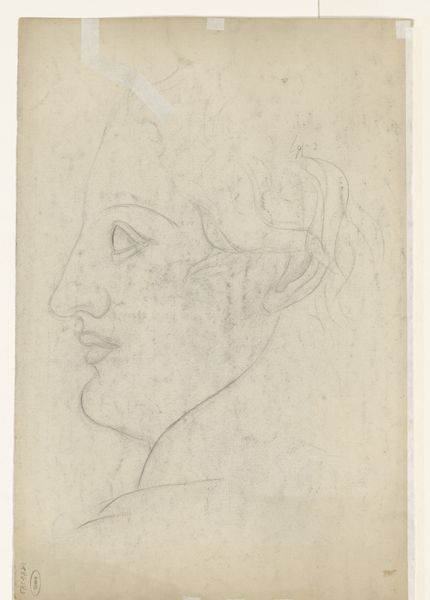
drawing, pencil
#
portrait
#
drawing
#
neoclacissism
#
figuration
#
form
#
pencil
#
line
Dimensions: height 233 mm, width 173 mm
Copyright: Rijks Museum: Open Domain
Editor: Here we have Johann Gottlieb Prestel’s “Head of a Young Woman” from 1783, a pencil drawing currently housed at the Rijksmuseum. There's an incredible delicacy to the lines; the portrait is very subtle. How would you approach an interpretation of this drawing? Curator: It is compelling to look at the material reality of this drawing. Consider the cost of paper and pencils in 1783, and who had access to those materials. This seemingly simple drawing speaks volumes about class and access. Who was this young woman? Was she of the same class as the artist, or was her image a commodity? Editor: That’s a fascinating perspective! I was focused on the Neoclassical style, thinking about idealised beauty and form. But your focus shifts my understanding. Curator: Neoclassicism, yes, but how is that ideal of beauty produced? Through labour. Prestel would have trained rigorously, honing his skills through repetitive practice. Think about the embodied labour present in each precise line, each carefully rendered curl of her hair. The lines also highlight the form and the material status. Editor: So, by looking at the physical materials and the process, you’re revealing the social context and power dynamics of the time? The production costs and access to the materials in some sense create the class dimension and value. Curator: Exactly. The drawing becomes a document of its time, reflecting the economic and social structures that enabled its creation. The finished artwork obfuscates the material origins in this regard. Editor: I never thought about a drawing like that before. I’m used to thinking about the artist’s intention and symbolism. Curator: And those are also relevant lenses, but examining the materials and production reveals the often-unacknowledged labor and social contexts embedded in the artwork. How might that inform your studies moving forward? Editor: I’m eager to start asking more questions about where the materials come from, and who benefits from the production of art! Curator: Excellent! Every artwork contains the seeds of its own material history.
Comments
No comments
Be the first to comment and join the conversation on the ultimate creative platform.
